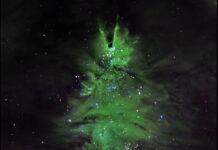Meet the Medal-Winners in SA’s Wildlife Olympics
In an innovative twist on the traditional sporting event, South Australia has hosted its very own Wildlife Olympics, an event that has captivated audiences and trended on Google searches today. This unique competition showcases the remarkable abilities of various animal species, highlighting their incredible adaptations and natural skills. For more details on this event, you can refer to this news.
The Wildlife Olympics, held in July 2024, aims to bring awareness to the extraordinary capabilities of South Australia’s fauna while promoting conservation efforts. Below, we dive into the standout performers of this fascinating event, celebrating their remarkable feats and the important message behind the event.
The Marathoner: The Grey-headed Flying Fox
Taking home the gold in endurance flying is the Grey-headed Flying Fox. Known for their extensive migration patterns, these bats can travel over 50 kilometers in a single night in search of food. Their impressive stamina and navigational skills are akin to a marathon runner’s endurance, covering vast distances with precision. This remarkable endurance is essential for their survival, as it allows them to locate flowering and fruiting trees across large areas.
The High Jumper: The Red Kangaroo
The Red Kangaroo, Australia’s iconic marsupial, clinched the gold medal in the high jump category. Known for their powerful hind legs, red kangaroos can leap over 3 meters in a single bound. This incredible ability not only helps them evade predators but also allows them to cover large distances in search of food and water in the arid Australian outback. The kangaroo’s muscular build and unique hopping motion are testaments to its adaptation to the harsh environment.
The Sprinter: The Cheetah
Although not native to South Australia, the cheetah’s inclusion in the Wildlife Olympics emphasizes its unparalleled speed. The cheetah can reach speeds of up to 112 kilometers per hour, making it the fastest land animal. Its sleek, aerodynamic body and powerful limbs enable it to accelerate from 0 to 96 kilometers per hour in just a few seconds. This incredible speed is vital for hunting, allowing the cheetah to ambush and catch prey with remarkable precision.
The Weightlifter: The Dung Beetle
In the weightlifting category, the dung beetle emerged as the undisputed champion. These tiny insects can move objects up to 50 times their own body weight, showcasing their extraordinary strength. Dung beetles play a crucial role in the ecosystem by recycling nutrients and reducing waste. Their ability to roll and bury dung balls not only supports their survival but also contributes to soil health and fertility.
The Gymnast: The Sugar Glider
The sugar glider wowed audiences with its acrobatic prowess, earning the gold medal in the gymnastics category. These small, nocturnal marsupials can glide up to 50 meters between trees, thanks to their patagium—a membrane stretching from their wrists to their ankles. Sugar gliders use their gliding ability to forage for food and evade predators, demonstrating remarkable agility and control in the air.
The Swimmer: The Platypus
The platypus, one of Australia’s most unique animals, took the gold in the swimming category. With its webbed feet and streamlined body, the platypus is an adept swimmer, capable of diving and maneuvering through water with ease. This semi-aquatic mammal uses its sensitive bill to detect prey underwater, showcasing a combination of speed and precision that rivals any Olympic swimmer.
The Significance of the Wildlife Olympics
The Wildlife Olympics is more than just a celebration of animal prowess; it is a powerful reminder of the importance of biodiversity and conservation. Each of these animals possesses unique adaptations that have allowed them to thrive in their respective environments. By highlighting these incredible feats, the event aims to foster a greater appreciation for wildlife and the need to protect their habitats.
Conservation Efforts and Public Awareness
One of the primary goals of the Wildlife Olympics is to raise awareness about the threats facing these remarkable animals. Habitat loss, climate change, and human activities are putting immense pressure on wildlife populations. By showcasing the extraordinary abilities of these animals, the event hopes to inspire conservation efforts and encourage people to take action to protect these species and their habitats.
Public Reaction and Reviews
The Wildlife Olympics has garnered widespread acclaim from both the public and conservationists. Many have praised the event for its innovative approach to wildlife education and its ability to engage audiences in a meaningful way. Social media platforms have been abuzz with positive reactions, with users sharing their amazement at the animals’ abilities and expressing their support for conservation efforts.
Renowned wildlife expert Dr. Jane Goodall commented on the event, stating, "The Wildlife Olympics is a brilliant initiative that not only entertains but also educates. It highlights the incredible diversity of life on our planet and underscores the urgent need to protect these species and their habitats."
Good to Know Information
- Grey-headed Flying Foxes are vital pollinators and seed dispersers, playing a crucial role in maintaining healthy ecosystems.
- Red Kangaroos are the largest marsupials, with males standing over 1.8 meters tall.
- Cheetahs’ acceleration is faster than most sports cars, making them exceptional hunters.
- Dung Beetles contribute to reducing greenhouse gas emissions by burying dung, which would otherwise release methane.
- Sugar Gliders are social animals that live in family groups, communicating through a series of vocalizations.
- Platypuses are one of the few venomous mammals, with males possessing venomous spurs on their hind legs.
Conclusion
The Wildlife Olympics is a testament to the incredible diversity and adaptability of South Australia’s wildlife. By celebrating the natural abilities of these animals, the event aims to raise awareness about the importance of conservation and inspire action to protect our planet’s precious biodiversity. As this news continues to trend on Google, it serves as a reminder of the wonders of the natural world and the need to preserve it for future generations. For more information, refer to this news.
In conclusion, the Wildlife Olympics is not just an entertaining spectacle; it is a vital educational tool that underscores the importance of protecting our natural world. By recognizing the incredible abilities of these animals, we can foster a deeper appreciation for their role in the ecosystem and the urgent need to conserve their habitats. As this event continues to trend, it is a powerful reminder of the beauty and complexity of the natural world and the responsibility we all share in preserving it.


































